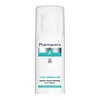What's inside
What's inside
 Key Ingredients
Key Ingredients

 Benefits
Benefits

 Concerns
Concerns

 Ingredients Side-by-side
Ingredients Side-by-side

Water
Skin ConditioningGlycerin
HumectantEthylhexyl Methoxycinnamate
UV AbsorberC12-15 Alkyl Benzoate
AntimicrobialPolyglyceryl-3 Methylglucose Distearate
EmulsifyingDicaprylyl Carbonate
EmollientEthylhexyl Triazone
UV AbsorberGlyceryl Stearate
EmollientIsopropyl Palmitate
EmollientMethyl Gluceth-20
HumectantButyl Methoxydibenzoylmethane
UV Absorber1,2-Hexanediol
Skin ConditioningCetyl Alcohol
EmollientButylene Glycol
HumectantImperata Cylindrica Root Extract
Skin ConditioningHydrogenated Olive Oil Decyl Esters
Emulsion StabilisingPEG-8
HumectantSodium Polyacrylate
AbsorbentAcrylates/C10-30 Alkyl Acrylate Crosspolymer
Emulsion StabilisingAllantoin
Skin ConditioningEthylhexylglycerin
Skin ConditioningTriethanolamine
BufferingCaprylic/Capric Triglyceride
MaskingTocopherol
AntioxidantCodium Tomentosum Extract
Skin ProtectingCarbomer
Emulsion StabilisingAscorbyl Palmitate
AntioxidantInulin
Skin ConditioningLaminaria Ochroleuca Extract
Skin ConditioningAlpha-Glucan Oligosaccharide
CleansingAscorbic Acid
AntioxidantCitric Acid
BufferingPhenoxyethanol
PreservativeWater, Glycerin, Ethylhexyl Methoxycinnamate, C12-15 Alkyl Benzoate, Polyglyceryl-3 Methylglucose Distearate, Dicaprylyl Carbonate, Ethylhexyl Triazone, Glyceryl Stearate, Isopropyl Palmitate, Methyl Gluceth-20, Butyl Methoxydibenzoylmethane, 1,2-Hexanediol, Cetyl Alcohol, Butylene Glycol, Imperata Cylindrica Root Extract, Hydrogenated Olive Oil Decyl Esters, PEG-8, Sodium Polyacrylate, Acrylates/C10-30 Alkyl Acrylate Crosspolymer, Allantoin, Ethylhexylglycerin, Triethanolamine, Caprylic/Capric Triglyceride, Tocopherol, Codium Tomentosum Extract, Carbomer, Ascorbyl Palmitate, Inulin, Laminaria Ochroleuca Extract, Alpha-Glucan Oligosaccharide, Ascorbic Acid, Citric Acid, Phenoxyethanol
Water
Skin ConditioningGlycerin
HumectantPropanediol
SolventHamamelis Virginiana Leaf Water
Astringent1,2-Hexanediol
Skin ConditioningInulin
Skin ConditioningFructose
HumectantGlucose
HumectantCentella Asiatica Extract
CleansingHydroxyacetophenone
AntioxidantPotassium Azeloyl Diglycinate
Skin ConditioningCellulose Gum
Emulsion StabilisingHectorite
AbsorbentHydroxyethylcellulose
Emulsion StabilisingXanthan Gum
EmulsifyingCitric Acid
BufferingCellulose
AbsorbentAgastache Mexicana Flower/Leaf/Stem Extract
Skin ConditioningSodium Benzoate
MaskingPotassium Sorbate
PreservativeWater, Glycerin, Propanediol, Hamamelis Virginiana Leaf Water, 1,2-Hexanediol, Inulin, Fructose, Glucose, Centella Asiatica Extract, Hydroxyacetophenone, Potassium Azeloyl Diglycinate, Cellulose Gum, Hectorite, Hydroxyethylcellulose, Xanthan Gum, Citric Acid, Cellulose, Agastache Mexicana Flower/Leaf/Stem Extract, Sodium Benzoate, Potassium Sorbate
Ingredients Explained
These ingredients are found in both products.
Ingredients higher up in an ingredient list are typically present in a larger amount.
1,2-Hexanediol is a synthetic liquid and another multi-functional powerhouse.
It is a:
- Humectant, drawing moisture into the skin
- Emollient, helping to soften skin
- Solvent, dispersing and stabilizing formulas
- Preservative booster, enhancing the antimicrobial activity of other preservatives
Citric Acid is an alpha hydroxy acid (AHA) naturally found in citrus fruits like oranges, lemons, and limes.
Like other AHAs, citric acid can exfoliate skin by breaking down the bonds that hold dead skin cells together. This helps reveal smoother and brighter skin underneath.
However, this exfoliating effect only happens at high concentrations (20%) which can be hard to find in cosmetic products.
Due to this, citric acid is usually included in small amounts as a pH adjuster. This helps keep products slightly more acidic and compatible with skin's natural pH.
In skincare formulas, citric acid can:
While it can provide some skin benefits, research shows lactic acid and glycolic acid are generally more effective and less irritating exfoliants.
Most citric acid used in skincare today is made by fermenting sugars (usually from molasses). This synthetic version is identical to the natural citrus form but easier to stabilize and use in formulations.
Read more about some other popular AHA's here:
Learn more about Citric AcidGlycerin is already naturally found in your skin. It helps moisturize and protect your skin.
A study from 2016 found glycerin to be more effective as a humectant than AHAs and hyaluronic acid.
As a humectant, it helps the skin stay hydrated by pulling moisture to your skin. The low molecular weight of glycerin allows it to pull moisture into the deeper layers of your skin.
Hydrated skin improves your skin barrier; Your skin barrier helps protect against irritants and bacteria.
Glycerin has also been found to have antimicrobial and antiviral properties. Due to these properties, glycerin is often used in wound and burn treatments.
In cosmetics, glycerin is usually derived from plants such as soybean or palm. However, it can also be sourced from animals, such as tallow or animal fat.
This ingredient is organic, colorless, odorless, and non-toxic.
Glycerin is the name for this ingredient in American English. British English uses Glycerol/Glycerine.
Learn more about GlycerinInulin is a polysaccharide (carbohydrate) with prebiotic and antioxidant properties.
The majority of inulin is extracted from chicory, but can also be obtained from other plants such as garlic, onion, asparagus, and sugarcane.
Studies show inulin may help with controlling your skin's natural microbiota when applied topically.
The antioxidant potential of inulin varies depending on the source.
Learn more about InulinWater. It's the most common cosmetic ingredient of all. You'll usually see it at the top of ingredient lists, meaning that it makes up the largest part of the product.
So why is it so popular? Water most often acts as a solvent - this means that it helps dissolve other ingredients into the formulation.
You'll also recognize water as that liquid we all need to stay alive. If you see this, drink a glass of water. Stay hydrated!
Learn more about Water